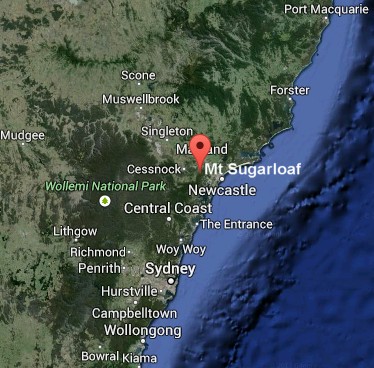

Contact

Home

THE WILD MAN.
The Sydney Morning Herald (NSW)
Date: May 22, 1863
Page Number: 8
A singular discovery has lately been made by the inhabitants of the South end of this island, being nothing less than that of a wild man, who has been living in the woods on the mountains for the past eighteen years. Judging from his physiognomy he is a North-west coast Indian, with perhaps some Spanish blood in him. His existence as a wild man has been frequently reported during the past eighteen years by the natives living between Diamond and Coco Heads, but their reports were never credited. Having lately been seen by two natives, they induced him to come down from his retreat. So for as we can learn, he cannot speak any language, but has been heard to say half intelligibly "aloha," the native salutation. Of his history--where he came from, who he is, or how he has lived for so many years in the damp, rainy, and often cold atmosphere of the mountains--nothing can be gathered. When found he was nearly naked, having on only a maro, but the natives are trying to civilise him, at least so far as outward appearances are concerned. * * * * There is nothing in his appearance calculated to excite curiosity, and, were it not for the report that he had lived in a wild state for eigh'een years, he would not be half so much an object of popular curiosity as some specimens of humaniiy daily to be seen in our streets.
This was reported from the Sandwich Islands which was the name given to the Hawaiian Islands by James Cook in the 1770s.

The Brisbane Courier (Qld.)
Date: December 2, 1865
Page Number: 4
...
When he commenced his bushranging profession he talked in big words of the exploits he should perform, and told the men he robbed that he would make the police knock the dust off their shoes. It is possible that a want of active occupation has accumulated a good deal of dust on the shoes of our country constables. However that may be, these persons appear either to be very fond of the dust, or anxious to prove that the "Wild Scotch-man" has a more Herculean task to perform in carrying out his boast than he supposes. On two occasions, however, it is only fair to admit, a few mounted men did start after the Wild Man, yet they might have had no dust on their shoes, or cared not what the bush-ranger said.
...
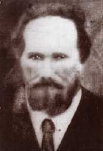
McPherson, James Alpin
(1842–1895)
"The Wild Scotchman"

Empire (Sydney, NSW)
Date: May 21, 1866
Page Number: 3
A "wild man," apparently a lunatic, is exciting some attention and alarm in the neighbourhood of Warrenheip. The Star describes him as "a man of rather respectable appearance, who has been seen for some days in the bush between Ballarat and Warrenheip, and, about a mile from the latter township. He has made himself a 'mi-mi,' but when any person approaches it he betakes himself to the bush, and will not return until he imagines everything quiet. This eccentric conduct has caused some disquietude amongst the people living adjacent, and they have tried by all means to learn something of the individual, but to no purpose. Constable Goan, from Warrenheip, who has also been looking after him has been equally unsuccessful. The man is probably some unfortunate lunatic, and ought to be looked well after.
The Queenslander (Brisbane, Qld.)
Date: November 17, 1866
Page Number: 11
...
Not long ago the following telegram, or one to very similar effect, was received in Melbourne from Echuca, or some place on the Murray:— "Wild man has been captured by the police on the Murray," and the next day it was recorded in the morning papers that a wildman had been caught in the bush, and was in charge of the police. The information intended to be conveyed was that Mr. Wildman, a defaulting Government officer in Adelaide, and who had absconded, had been captured on the Murray, and the recipient of the message was expected to fill up the blanks, and to do that he required to have the local information which he was not possessed of.
...
DU CHAILLU'S LATEST ABOUT THE GORILLA.
Braidwood Independent (NSW)
Date: September 14, 1867
Page Number: 8
ON May 17, M. Du Chaillu delivered be fore the Society for the Advancement of Science in New York, a full account of his adventures
in hunting and capturing gorillas in Africa. If was one of the most interesting discourses respecting the brute creation ever listened
to, and was as follows :
The immense forests of the equatorial regions, where wild roots and berries abound, seem well adapted
for the home of the man-like ape which I met in those regions, among which rank first the gorilla, or "the wild man with a club."
...
Launceston Examiner (Tas.)
Date: August 11, 1870
Page Number: 4
While Mr. Goodall and party were prospecting in the neighborhood of Ben Lomond, lately, they came upon a "wild man" of singular appearance who had evidently led a solitary life in the bush for a number of years. Mr. Goodall's dogs were suddenly attacked by some very wild dogs, and while the animals were fighting there came to the rescue of the strange dogs a still stranger being, in the shape of a hermit-like old man with grizzly beard hanging down to the middle of his body, long-turved toe and finger nails, and clad in badgers' skins. They succeeded in gleaning from him that he had been living for twelve years under Ben Lomond; that it was fully six years since he had seen a white man ; but he gave them no account of who he was, or why he had taken up his solitary abode in that unfrequented locality. Before leaving, Mr. Goodall's party presented him with a quantity of flour, and on returning to Fingal they communicated the circumstance of their strange encounter with the hermit to Mr. Smith, Superintendent of the Fingal police force, who at once sent some members of the force to make further enquiries respecting the unknown individual who had so strangely withdrawn from the society of his fellow-men.
The Argus (Melbourne, Vic.)
Date: January 23, 1871
Page Number: 6
"A wild man of the woods," says the Talbot Leader, "was discovered by Constable Davison, about eight miles from Shelford, on Saturday.
Having received instructions that a man was running about perfectly naked, the constable went in search, and found a man named Denis
Donovan in the bush, with only a Crimean shirt to hide his nakedness, and covered with scratches and lacerated wounds. On inquiry
it was found that the unfortunate man was a resident of Ballarat, where he is said to have a wife and family. He had been drinking
lately, and delirium tremens supervening, he actually started from Ballarat, and ran through the bush for nearly 30 miles, in an almost
nude condition, before being seen by anyone who thought it worth while to give information to the police."
WILD MEN
Empire (Sydney, NSW)
Date: October 23, 1871
Page Number: 3
THE MICHIGAN MONSTER.
(From the Detroit Free Press.)
EARLY last winter parties living several miles from Windsor discovercd in the
woods, huddled up against a log, in a vain effort to got warm, a curious kind of beast or man, one can scarcely tell which. The "it"
is fearfully deformed, his hands covered with a long, course hair ; face grown full of rank whiskers, eyes looking liko those of a
wolf, and his present captors treat him more like a dog than a poor unfortunate lunatic. After being in Windsor for a few days, the
"man-wolf," as he was named, was brought over here, and it is at present on Michigan avenue. It is the general opinion that the strange being
is the man who escaped from the lunatic asylum at Malden last fall, but this is an error. The fugitive was a strong, tall man, standing
very stiff and erect, whereas this specimen is badly deformed, and would not have been capable of making the stout resistance and
the rapid flight made by the lunatic in question. But how the being came in the vicinity of Windsor no one is able to tell, or at
least has not yet informed the public. A man named Seth Narmore, from Sarnia, was at the central station yesterday, and after paying
a visit to the keeping-place of the strange creature, returned and reported, that he knew his history. Some three years since a man named
Roscommon, living about twelve miles from Sarnia, received in charge from his brother at Montreal a lunatic, supposed by outsiders
to be some relative of the family, although Roscommon was not communicative of facts. The lunatic was at first confined in a chamber
of the house, but he attracted so much attention from the passers-by, and so disturbed the inmates of the house, that a small building
was soon built for his especial keeping. Very few peple ever saw the unfortunate, but hundreds of farmers passing by used to hear
his scream and beat the walls of his prison. At length one night he made his escape, and Roscommon was compelled to ask the assistance
of his neighbours to secure him. They found him in a swamp eating bark and roots ; but he exhibited the utmost ferocity when an attempt
was made to catch him, finally leaving the swamp when a couple of dogs were sent in after him, and one of the scars on his face was
received when the men were binding him. Mr. Narmore was one of the pursuers, and he is quite positive that this "man wolf" is the
identical lunatic, as that one did finally make good his escape, and no one was able to hunt him down. It is asserted, and it has
been reported to the superintendent of police, that the "owners" of this stranger do not treat him as they should. He is kept chained a
good share of the time, and the rough boys of the neighbourhood are allowed to tease and vex him. If there is a good reason for believing
that he has escaped from any lunatic asylum, there ought to be an investigation made by the police, or some proper official. Without
doubt he is crazy, as well as fierce and ravenous, and it would be only humane and decent for him to be taken from his present owners and
sent to the country house or insane asylum.
THE TENNESSEE WILD MAN.
The Jackson (Town.) Whig, of the 15th instant, says : We learn that
between Sobby and Crainsville, on what is called Piney, in M'Nairy County, a strange and frightful being has been observed for several
weeks. He is said to be seven feet high, and possessed of great muscular power. His eyes are unusually large, and riery red ; his
hair hangs in a tangled and matted mess of jet below his waist, and his beard reaches below his middle. His entire body is covered
with hair, and his whole aspect is most frightful. He shuns the sight of men, but approaches with wild and horrid screams of delight
every woman who is unaccompanied by a man. He sometimes with great caution approaches houses ; and should he see a man, he runs away
with astonishing swiftness, leaping the tallest fences with the ease of a deer, defying alike the pursuit of men and dogs. He has
frightened several women by attempting to carry them off, as well as by his horrid aspect, and the whole country around Sobby is in
consternation. The citizens are now scouring the woods, and are determined either to capture or drive off the monster.
A WILD MAN IN
TEXAS.
Gatesville, Texas, is excite over the appearance of an immense orang-outang in its vicinity. The animal is described as being
about seven feet high, and covered from head to foot with a thick coating of hair. Its eyes shine like fire, and it boasts a double
row of murderous-looking teeth. When last seen it had in one hand a large crooked stick, and under the other arm a young calf, apparently
just killed. A hunting party has been organized to capture or kill the monster.
It was the particular and local circumstances of a community that resulted in a community seeing Wild Men. Those localized circumstances
shaped the stories that Americans told about the Wild Men they saw and what actions they took towards individuals they inscribed with
those stories. Most Americans never saw a Wild Man or came to believe that the wild spaces around their community were inhabited by
a human being enveloped by the transformative power of the natural world because the particular circumstances of their community did
not lead them to that belief. Yet despite the localness of Wild Men sightings, the American belief in Wild Men was a national phenomenon.
While Americans did not see Wild Men everywhere, across the continent they did have the opportunity to read about Wild Men in newspapers
and other printed media. Thus, even the vast majority of Americans who never encountered a Wild Man participated in the American Wild
Man tradition.
The American belief in Wild Men must also be considered a national phenomenon because it was shaped by national forces.
American Wild Man stories, stories set in America in which Americans are transformed into Wild Men, rose to prominence in the late
1840s and early 1850s. As we have seen, prior to that period there were republications of European Wild Man stories in newspapers
and almanacs. There were also early news stories about Wild Man like figures in America, some of which newspapers referred to as Wild
Men, some of which they did not. But these stories lacked the coherence and prominence that the figure would later develop. The classic
American Wild Men stories, like that of the Wild Man of Arkansas or the Wild People of the Navidad, only appeared in the late 1840s.
They were soon followed by hundreds like them for the remainder of the century. This national rise to prominence can only be explained
by some of the significant changes that were taking place in American society during those decades, including the market revolution,
the democratization of knowledge, and U.S. territorial expansion. For the rest of the century, the figure retained its place in American
culture.
The rise of evolutionary thinking in the post-bellum period only served to further solidify the figure’s place in American
culture. In America, the dominant form of evolutionary thought was not Darwinian evolution by natural selection but rather Neo-Lamarckian
evolution in which organisms adapted themselves to their environment during their lifetime and these acquired characteristics were
passed on to their descendents. Indeed, Neo-Lamarckianism was but a new form of the American environmentalism thinking. As long as
Americans believed that the environment could shape the human body and human nature, they would believe in Wild Men.
Erik D.
Anderson (2010) Feral Bodies, Feral Nature: Wild Men in America. Pg 189-190.
ELIJAH
Australian Town and Country Journal (NSW)
Date: February 4, 1871
Page Number: 20
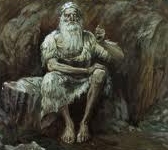
Reports of the Wild/Hairy Man part 5
Yowie / Bigfoot
THE WILD MAN OF BEN LOMOND.
Empire (Sydney, NSW)
Date: October 8, 1871
Page Number: 3
(from the Launceston Examiner)
Our readers will remember that some months ago, when Mr. J. S. Goodall and party were prospecting about the foot of Ben Lomond, they fell in with a man in an almost nude state, who had been living in a hollow tree in that vicinity for some years. His practice was, when rations was short, to make incursions on the neighbouring farmers, returning to his hiding place and remaining there until necessity compelled him to make a fresh foray. On the occasion referred to Mr. Goodall gave chase, but the man eluded him, and has remained at large ever since, being spoken of as the "Wild man of the Tier." A short time back the Fingal police received information that these depredations had increased, and they resolved to moke an effort to discover the perpetrator. After a careful search, which lasted twelve days, the man was captured by Constnble Stubbs, who deserves great praise for his perseverance and tact. For some time the search seemed hopeless; no trace of the man could be found. The police ascended the highest part of the mountain in the vicinity for the purpose of watching for smoke, but saw none. At last Couslable Stubbs, in going down to a creek, discovered a track in which were a few grains of wheat, and whilst studying what they meant he saw the "wild man" himself coming along the track with a billy in his hand, and at once took him into custody. On following the track up it led to a large hollow tree which had formed the prisoner's habitation, and on examining it closely Stubbs found that three augur-holes had been bored at different elevations, so that the smoko escaped from them in only small quantities, and, therefore, was not observed. The prisoner's name is M'Coy.

Original article:
The Cornwall Chronicle (Launceston, Tas.)
Date: October 8, 1871
Page Number: 3
...
The only other conviction was that of Robert James McKay, known as the wild man of Ben Lomond, where he had been existing for two years past. He was convicted of stealing a few carpenter tools and other articles from the hut of William Burns, and John Leonard, at Bean Lomond, in August last. He also pleaded guilty to another conviction in 1868, and he was sentenced to four years imprisonment.
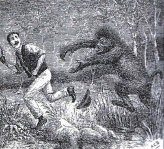
Contents
The "Yahoo," or "Debil Debil."
The Maitland Mercury & Hunter River General Advertiser (NSW)
Date: October 21, 1871
Page Number: 4
We were informed a few days ago that Windsor and its neighbourhood had been thrown into great excitement by the capture of a bunyip, "Yahoo," "Debil Debil" or some other equally extraordinary creature, at Webb's Creek, Lower Hawkesbury, and that, as its like had never before been seen by the oldest inhabitants, it was determined to forward the wonderful animal to Sydney, and there exhibit it to a wondering and gratified public. This was accordingly done, and the Yahoo has been on exhibition during the last few days at 228, Pitt-street, next to Mr. Weir, the butcher's, establishment. An inspection proved the animal to be a large wombat, of the species known as "platyrhinus," which is peculiar to New South Wales. The brute weighs about 100 lbs, and gave his captors a tough job to secure him.
—Empire, 19th October.

(03-01-2014)
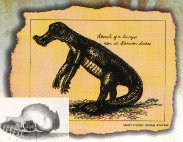
Bunyip
Strange Animal.
The Sydney Morning Herald (NSW)
Date: December 11, 1866
Page Number: 5
For two years past a strange animal has occasionally been seen by people in the bush near the Murilla Mountain, and various have been the descriptions given of the creature, so that we have been doubtful of the reports and fancied the animal was nothing more or less than an old "wallaroo," as the locality of the Murilla is very wild and rocky, and the wallaroo is found in such places ; but within the last few days two persons have seen the creature that has caused much alarm to a whole camp of stone breakers and roadmakers, sixteen or seventeen in number.
It is described as being three feet six inches high, standing on its hind legs, the fore legs or arms could about touch the ground. It was covered with shaggy black hair all over. It made a most horrible yelling when the parties
rode in the direction of the rock it stood upon, showing a very fine set of teeth. It made a spring at its disturbers, who put spurs to their horses and fled. The blacks in this district are aware of the existence of these animals, and state that there were a great number of them some time ago.
The place where this creature was seen is one of the wildest places that could be found on the northern line of road, at the back of the Murilla Mountain, or as it is generally called, the "Murlow." This creature evidently belongs to the ape type. Has one of these creatures ever made its escape from confinement, or are there any of such creatures in the country? If so, it is strange they have not been spoken of before this. The utmost reliance may be placed upon the statement here put forward.

Hairy man:
Upper Murray,
Victoria
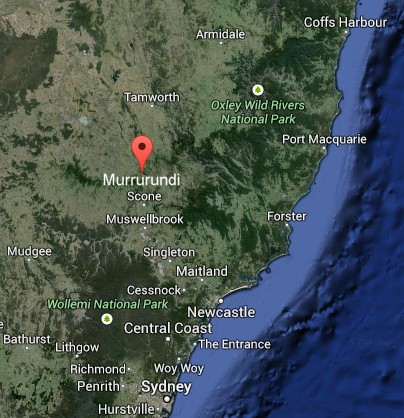
"Murilla Mountain" must have been renamed. However, this article from 1879 states that it is near the town of Murrurundi, NSW.
Added: 15-03-2014
Credit: Jon Wyatt

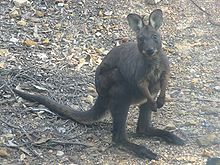

A STRANGE STORY.
The Maitland Mercury and Hunter River General Advertiser (NSW)
Date: April 2, 1868
Page Number: 3
The following narration we present to our readers for what it is worth, morely, promising that our informant gave us the intelligence in all good faith, and appeared to believe most entirely in the truth of the statement. Patrick Hogan, a free selector on the other side of the Sugarloaf Mountain, towards Lake Macquarie, was falling trees in the bush at about 8 o'clock last Thursday afternoon, when from the surrounding forest, which is thereabouts very dense, there came a creature, in all appearance like a man, but painted with various devices in brilliant colours upon a red ground from head to heel. The creature was most beautifully formed, and in all respects resembled one of the human species; it stood about five feet eight inches high; had long, tangled hair, and some ornament or bracelet round each knee; also some appearance of clothes about the waist. It had in each hand a stick which it brandished as it walked along, 'and seemed to know the use of the stick.' Whether this latter circumstance will aid in discovering the nationality of this queer kind of wild man, we leave our readers to judge. Hogan had a couple of dogs with him, one an old faithful watch dog, which he thought would face anything, the other a young kangaroo pup. The old dog, upon being set upon the apparition, slunk away in fear, but the kangaroo, more bold, barked loudly, but produced no effect upon the wild man, who bore the continued yelpings with the utmost coolness. Seeing this, Hogan advanced and menaced the creature with his axe, having previously called to it to stand, an order which it treated with as much disdain as the barking of the pup; but when it was in likelihood of being 'axed' to stand, it quickened its pace, and in two or three leaps disappeared. Hogan turned back to his hut to get a gun which he had there loaded, but on his return could find no trace of the creature, though it appeared that the kangaroo pup had followed it, as its yelpings were heard in the depths of the bush." Such is the story that we heard, and we give it as we heard it. The hero of the adventure is not without an opinion as to the genus of his mysterious visitor: he says it is a gorilla. Bearing in mind the descriptions that are familiar to the world of the hideousness of the African gorilla, we do not know how to account for the strange element of beauty which formed so marked a characteristic of this so-called Australian specimen of the species. Perhaps the inversion of things in general which is supposed to have taken place at the old world's antipodes may be the solution of the anomaly.

Hairy man:
Hunter Region
NSW
Added: 15-03-2014
Credit: Jon Wyatt

The Recollections of a Bullock Driver
Australian Town and Country Journal (Sydney, NSW)
Date: November 26, 1870


Added: 15-03-2014
Credit: Jon Wyatt
Old hands scare a new chum with tale of the Yahoo.



1863 to 1871
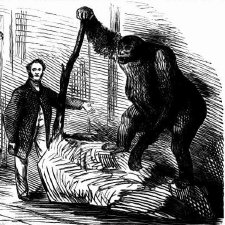
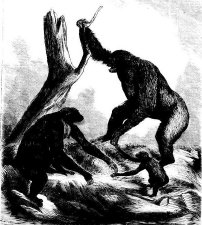
The Argus (Melbourne, Vic.)
Date: January 25, 1866
Page Number: 5
A report has been received at Albury from the Victorian upper Murray that a wild man perfectly nude and covered with long hair has been seen in the ranges near Koetong. A search party including a mounted trooper is scouring that locality.

(24-04-2016)



It has just been reported to Trooper Bilwood that a wild man, with hair on him about two inches long, has been seen in the ranges near Koetong (says the "Herald"). It is stated that he is perfectly naked, having nothing but a strip of cloth round his loins. We believe a search is to be organised for Sunday next.

Seymour Express and Goulburn Valley, Avenel, Graytown, Nagambie, Tallarook and Yea Advertiser (Vic.)
Date: January 29, 1866
Page Number: 2
It was reported here a little while ago that a wild man had been seen in the Koetong rages, and the source from which the information emanated not having been doubted, a party, under the guidance of Mr Osmond, of Koetong, who professed to have some slight knowledge of "the wild man of the woods" whereabouts, set out on Saturday morning with a view to his capture. After unsuccessfully scouring the ranges for a considerdable time, Mr Osmond astonished his comipanions by raising the cry of "Halloo." Away went the party helter skelter, Old Osmond far in the lead, over hill and down dale, across fallen trees and treacherous watercourses, through scrub and swamp, until finally the game took refuge in a hollow, upright tree. Mr Osmond, who was far in advance of his companions, at once dismounted, and pluckily went for the savage, but immedialtely found himself, not on the horns of a dilemma, but confronted by those of a patriarchal-looking billygoat, which had evidently wandered from the haunts of men and nannies. Great was the merriment indulged in over the termination of the chase, and many were the jokes that Mr Osmond had to take over his first essay ill the exciting pastime of wild man hunting.

Wodonga and Towong Sentinel (Vic.)
Date: January 29, 1866
Page Number: 2
Considerable excitement is continued to be felt in Tallangatta, a township 25 miles from Wodonga, consequent on the reports which have been received that a wild man in a nude condition, with his body covered with long hair, has been seen on the Koetong Ranges. It is asserted by several persons that they saw the man as described sitting between two fires, and that when observed he made off into the scrub, uttering loud yells. On Tuesday, Constable Allwood spent most of the day making search througuout the ranges, but could obtain no traces of the man.

The Age (Melbourne, Vic.)
Date: January 30, 1866
Page Number: 10
Although many historical reports of Wild/Hairy Men state the figure was "covered in long hair" they appear to be verbal cultural shortcuts which relate long, unkempt facial hair to whole body wildness rather than factual descriptions to be taken literally...
THE NATURALIST ON THE AMAZONS.
South Australian Weekly Chronicle (Adelaide, SA)
Date: January 9, 1864
Page Number: 6
“The feeling of inhospitable wildness which the forest is calculated to inspire is increased tenfold under this fearful uproar. Often, even in the still hours of midday, a sudden crash will be heard resounding afar through the wilderness, as some great bough or entire tree falls to the ground. There are, besides, many sounds which it is impossible to account for. I found the natives generally as much at a loss in this respect as myself. Sometimes a sound is heard like the clang of an iron bar against a hard hollow tree, or a piercing cry rends the air ; these are not repeated, and the succeeding silence tends to heighten the unpleasant impression which they make on the mind. With the natives it is always the Curupira, the wild man or spirit of the forest, which produces all noise they are unable to explain. Myths are the rude theories which mankind, in the infancy of knowledge, invent to explain natural phenomena. The Curupira is a mysterious being, whose attributes are uncertain, for they vary according to the locality. Sometimes he is described as a kind of ourang-otang, being covered with long shaggy hair, and living in trees. At others he is said, to have cloven feet and a bright red face. He has a wife and children, and sometimes comes down to the rogas [?] to steal the mandioca. At one time I had a Mameluco youth in my service whose head was full of the legends and superstitions of the country. He always went with me into the forest—in fact, I could not get him to go alone,—and whenever we heard any of the strange noises mentioned above he used to tremble with fear. He would crouch down behind me and beg of me to turn back. He became easy only after he had made a charm to protect us from the Curupira. For this purpose he took a young palm leaf, plaited it, and formed it into a ring, which he hung to a branch on our track.”
Hairy man:
Brazil
The Naturalist on the River Amazons; a Record of
Adventures, Habits of Animals, Sketches of Brazilian and
Indian Life, and Aspects
of Nature under the Equator
during Eleven Years of Travel.
By Henry Walter Bates,
2 vols. Murray, 1863.
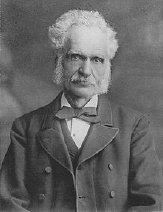
Henry Walter Bates FRS FLS FGS (8 February 1825 in Leicester – 16 February 1892 in London) was an English naturalist and explorer who gave the first scientific account of mimicry in animals. He was most famous for his expedition to the rainforests of the Amazon with Alfred Russel Wallace, starting in 1848.

Added: 08.12.2016

THE GORILLA.
The Newcastle Chronicle (NSW)
Date: April 8, 1868
Page Number: 4

Added: 08-03-2017
The narrative which appeared in your journal of last Saturday, taken from the Maitland Mercury, concerning Patrick Hogan, a free-selector on the other side of the Sugarloaf Mountain, towards Lake Macquarie, seeing what he termed a gorilla, has proved since to be a young Australian native named Sidebottom, who, being well acquainted with the old man, thought to have a lark with him, knowing that he was filled with superstitious notions. This young Australian, who resembled one of the human species, painted himself with various colours, and stood about the same height as that which Mr. Hogan had represented as a gorilla. But instead of Hogan menacing the creature with the axe, he at once commenced to cross himself, and at the same time lost his equilibrium while on his way to the hut. The kangaroo pup that is spoken of, doubtless knew the supposed Australian gorilla nearly as well as his master. The whole affair seams to have been carried out so cleverly that the Mercury has been caught in the trap on the first of April.
Yowieocalypse wishes to advise Aboriginal and Torres Strait Islander visitors that the article below contains names of deceased people:
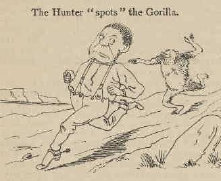
Sydney Punch (NSW)
Date: June 10, 1871
Page Number: 20

(06 Oct 2019)






































